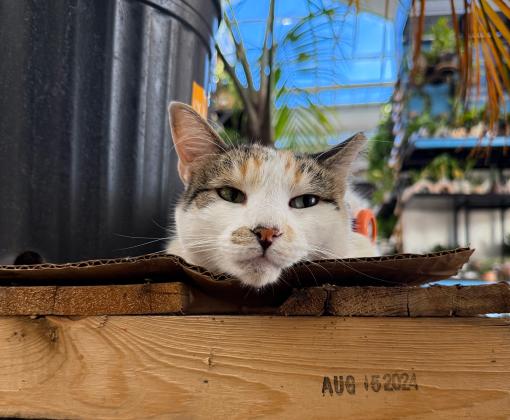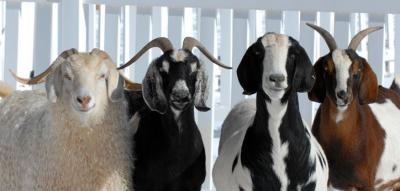
What to Know Before You Adopt a Goat
Goats can make wonderful companions. They are incredibly smart, playful, and curious. Plus, they’re great lawn mowers, as they love to chomp on grass and weeds. But to have a happy and healthy life, goats need to be more than just weed eaters; they require a lot of care and attention. Goats love to learn tricks, to go for walks, and to be groomed regularly. If you are planning to adopt a goat, here are a few things to consider.
Goat care: The basics
Goats can live up to 18 years. When cared for properly, they can make great pets and best friends. Here is everything your new goat will need:
Feed
Goats like to eat leaves, bark from trees, twigs, vines, and shrubs (as well as their daily ration of timothy hay). They also enjoy occasional treats, such as celery, carrots, mango leaves, grapes, bananas, apples, pears, zucchini, and watermelon. Some plants can be toxic to goats, so before you bring your goat home, it’s important to do a little research on the plants and weeds in your yard or pasture and clear out any that are toxic.
In addition to a variety of foods, goats need regular access to loose mineral supplements. Your local feed store should have plenty of choices. But keep in mind that goat minerals from the feed store contain copper, which is toxic to sheep and some other barnyard animals. So if your goat will live with other barnyard animals, keep the goat minerals in a goat-only area.
Shelter
Goats are amazing climbers, so they require secure, tall, predator-proof fencing. And be prepared to regularly maintain and secure your fencing. Goats are very active and love to explore, so they might find a seemingly impossible escape route — breaking your fence in the process. For that reason, the more pasture or acreage they have to roam, the better.
Supplying playground equipment is also a good idea to help keep your goat’s playful side satisfied. But make sure your playground equipment is away from fencing, so your goat doesn’t climb to the top and jump out. Goats also need a shelter where they can retreat at night or during inclement weather.
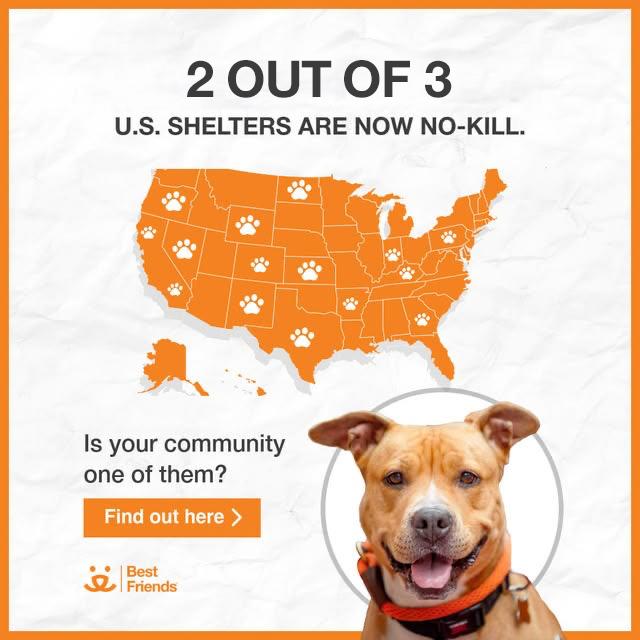
See how your community is doing
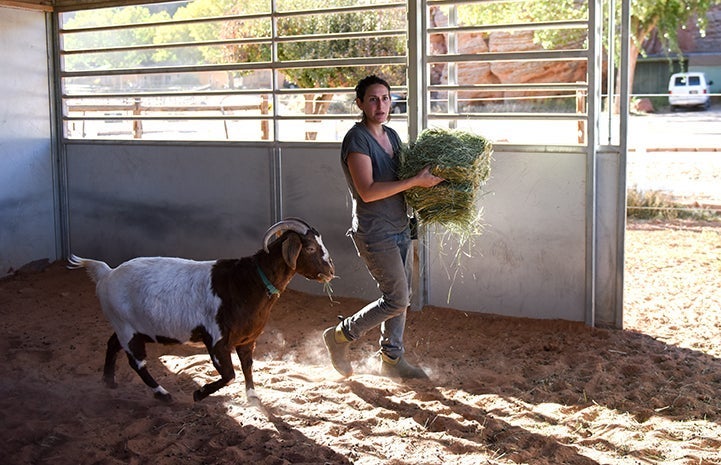
Medical care
Goats should receive annual tetanus vaccines and regular dewormers, which are available at feed stores or from your vet. Also, you’ll need to trim your goat’s hooves about four times per year. You can do this yourself (with patience), or your vet can help.
Enrichment
It’s important to provide your goats with an enriching environment, so they can thrive. The good news? There are tons of easy, cheap ways to do this. One of the best ways to help keep your goats happy is to provide them with places to climb. Here are a few ideas for simple, inexpensive climbing objects:
- Large tractor tires
- Picnic tables linked with wooden platforms
- Wooden half barrels with narrow walkways to play in
- Old boats, trucks, wagons, or trailers to jump into or eat hay from
- Dog igloos or houses to climb on
- Tree stumps to jump on, especially a few at different heights
- Jungle gyms, teeter-totters, ramps, and playground equipment
- Rock walls to play on and climb
You might be able to find these items for free through Craigslist or your local classified ads.
Explore Horse Haven, Where Goats Live
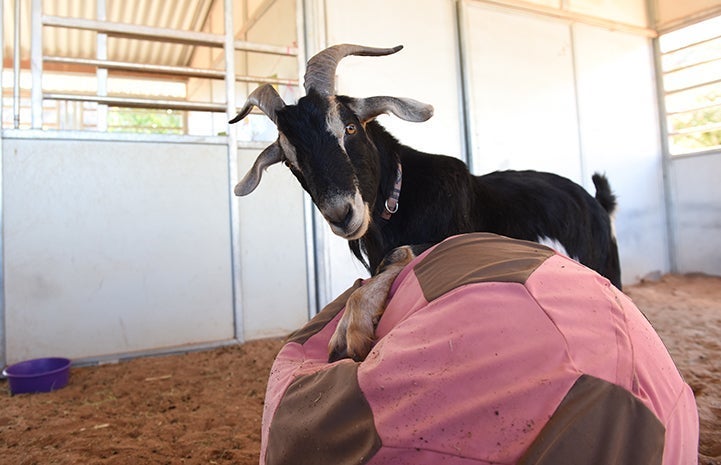
Adopting a goat
We want you to have a successful experience with your goat, so we recommend that you do research, talk to your veterinarian, and talk to others who have a goat. Learn as much as you can before you make a final decision about whether goats will fit into your lifestyle.
If you decide to adopt a goat from Best Friends, we encourage you to visit Best Friends Animal Sanctuary to meet the goat you are thinking of adopting. That will give you a good chance to interact and make sure the animal is a good fit for you. A visit isn’t always required, but it can definitely be a good idea.
